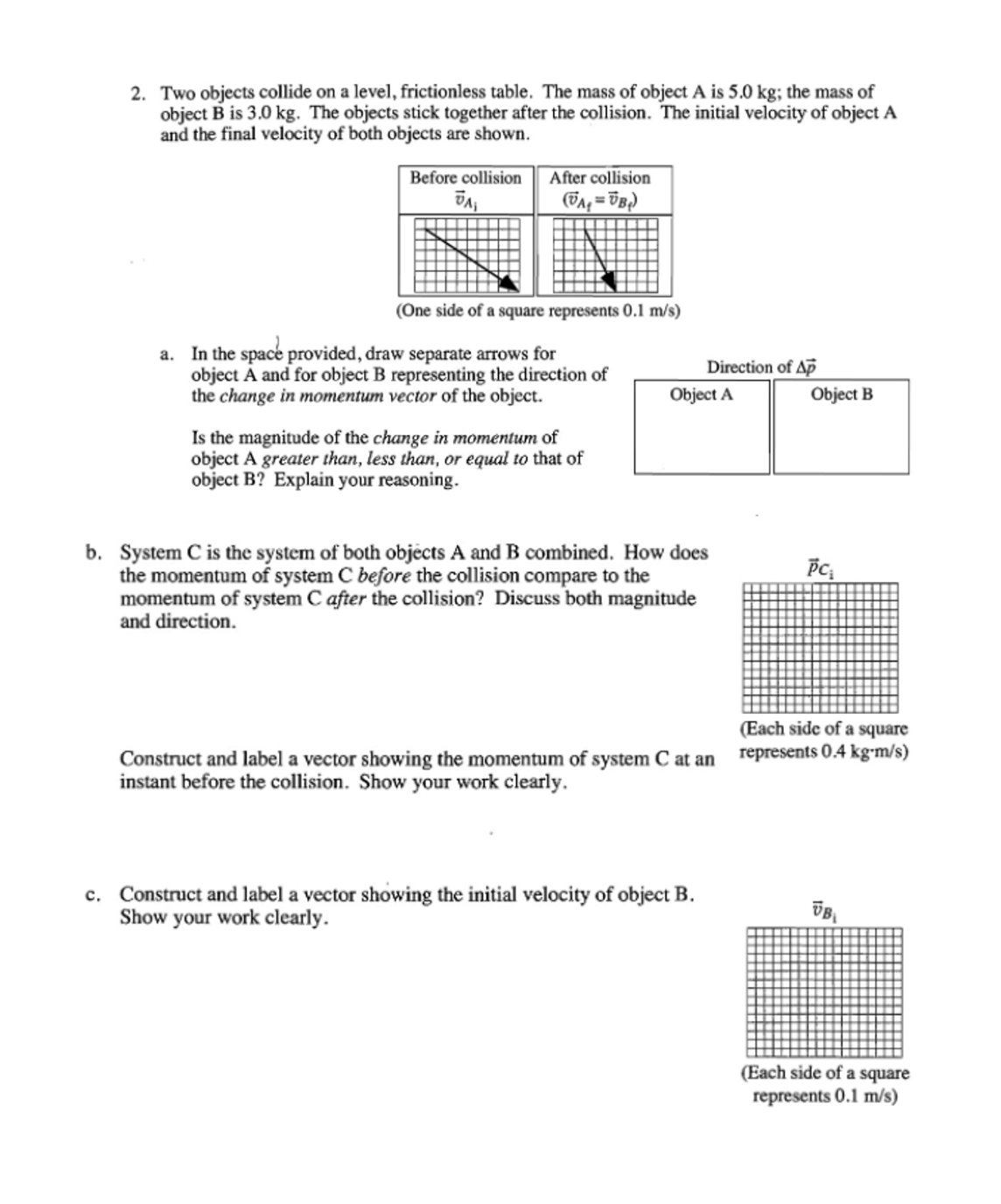Answered step by step
Verified Expert Solution
Question
1 Approved Answer
2. Two objects collide on a level, frictionless table. The mass of object A is 5.0 kg; the mass of object B is 3.0

2. Two objects collide on a level, frictionless table. The mass of object A is 5.0 kg; the mass of object B is 3.0 kg. The objects stick together after the collision. The initial velocity of object A and the final velocity of both objects are shown. Before collision After collision (VA =VBR) Direction of Ap Object A Object B (One side of a square represents 0.1 m/s) a. In the space provided, draw separate arrows for object A and for object B representing the direction of the change in momentum vector of the object. Is the magnitude of the change in momentum of object A greater than, less than, or equal to that of object B? Explain your reasoning. b. System C is the system of both objects A and B combined. How does the momentum of system C before the collision compare to the momentum of system C after the collision? Discuss both magnitude and direction. PC Construct and label a vector showing the momentum of system C at an instant before the collision. Show your work clearly. (Each side of a square represents 0.4 kgm/s) c. Construct and label a vector showing the initial velocity of object B. Show your work clearly. VB (Each side of a square represents 0.1 m/s)
Step by Step Solution
There are 3 Steps involved in it
Step: 1
To solve this problem lets break it down into parts a Change in Momentum 1 Determine the Initial and ...
Get Instant Access to Expert-Tailored Solutions
See step-by-step solutions with expert insights and AI powered tools for academic success
Step: 2

Step: 3

Ace Your Homework with AI
Get the answers you need in no time with our AI-driven, step-by-step assistance
Get Started


